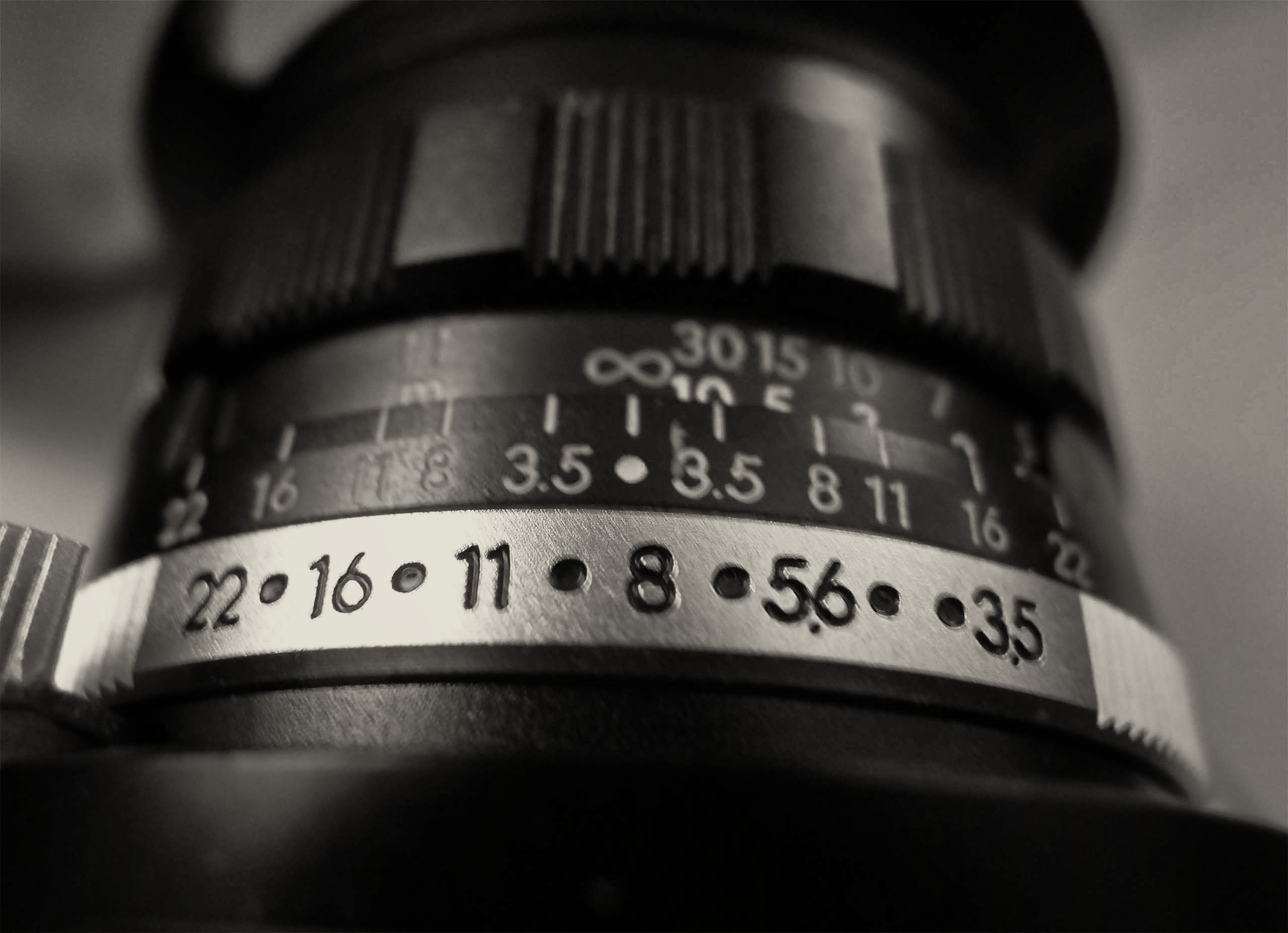 Focus and Aperture Movements with Older Lenses
Focus and Aperture Movements with Older Lenses
Mirrorless cameras have become popular partially due to their relatively short distance from the lens mount to the imaging plane. This shortened distance has allowed for the use of a variety of vintage lenses. The distance that was reduced was made possible by eliminating the need for a movable mirror system between the lens and the focus plane. On a mirrorless camera, adapters are used to take up that space and fill the gap created.
Note: At this point, I should say that the majority of lenses from earlier times were what we call manual focus. They did not have automatic focusing and required the operator to rotate a focusing ring on the lens to focus the image onto the film.
A marking index on the lens indicates the point of focus in both feet and meters. The Focus Index shows the current point of focus in the scene. Using the same index point the aperture can be set to the desired opening.
The index is also used to determine depth of field. (see below)
In the day of vintage photography, depending on the manufacturer, focus and aperture controls had a few minor design differences.
Brand names such as Nikon, Canon, Pentax, and Minolta designed their lens lineup to be consistent from lens to lens so that the user could rely on which direction to rotate the focus or aperture controls. For the benefit of the user, it made sense to have them behave consistently within the range of lenses offered.
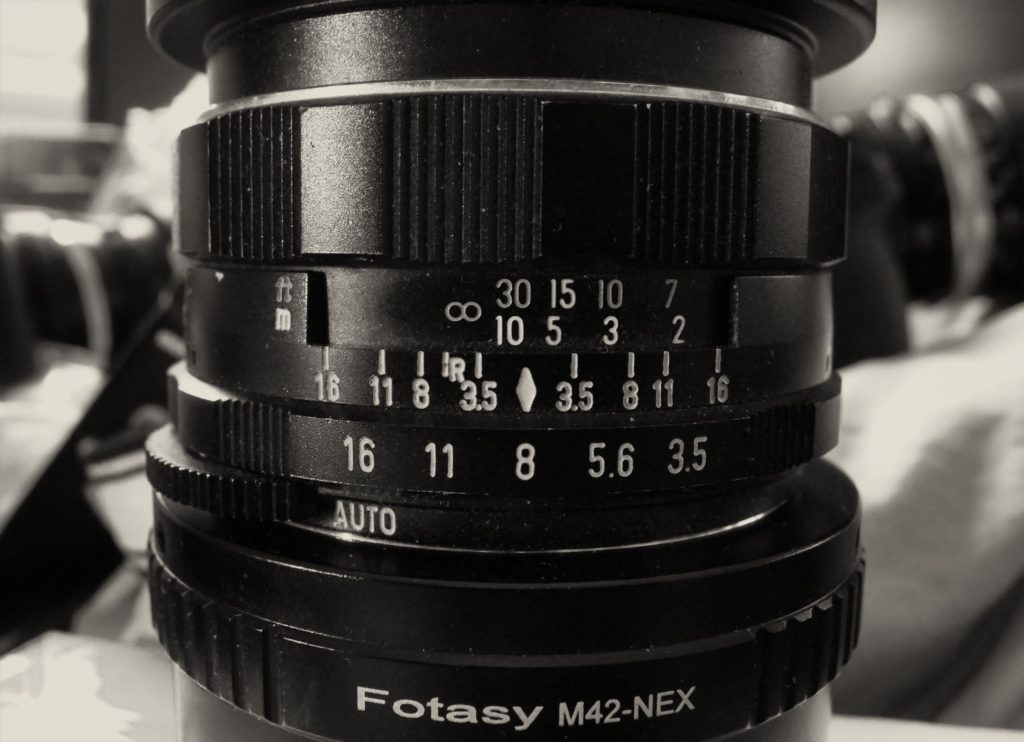
Pentax screw mount Takumar lens showing focus scale in both feet and meters and aperture rings. The numbers shown in the center is a depth of field scale. The aperture scale is located at the bottom near the camera mount.
Rotating the control ring in one direction caused the lens to focus on closer subjects. Moved in the opposite direction allows the lens to focus towards infinity. Understanding the specified layout for adjustment, the act of focus could ultimately become second nature. The movement control from one point to another was something on which the photographer could rely.
Likewise, the aperture control ring would be oriented similarly. Moving the ring in one way would open the lens toward larger openings and oppositely stop down to smaller apertures.
Note: The depth of field scale is usually located between the focusing scale and the aperture adjustment scale. It is used for determining what may be in relative focus with various aperture settings. I will save this for another topic to be discussed in the near future.
The differences between various manufacturers were not always the same. Nikon and Canon were opposite in how they designed lens controls. It was almost as if they were building in contrariety against other brands. Nikon adjustments moved in one direction and, Canon moved everything in the opposite direction. As shown in the pictures, most brands followed similar design standards.
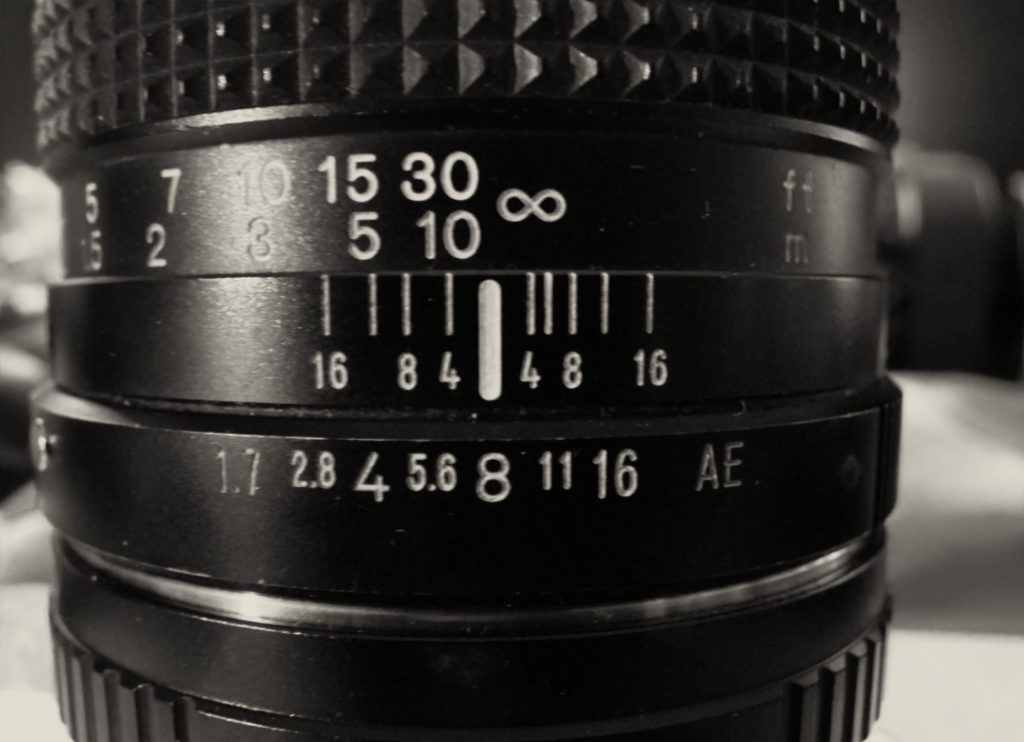
Konica Hexanon lens showing focus scale at the top, a depth of field scale in the center and the aperture selection scale at the bottom.
These days, some digital cameras allow the user to select the action of control rings on the lenses they offer. The camera menu selection lets the user set the desired orientation based on personal preferences—rotation can be either clockwise or counterclockwise.
Many image-makers, such as myself, love to use older lenses on digital cameras. There are many reasons to use them.
When using a selection of older lenses made by different manufacturers, it can become somewhat confusing. It might make a big difference to the user when looking at the purchase of vintage lenses. Or perhaps not. I like to know the workings before I go out to shoot so that nothing interrupts my image-making.
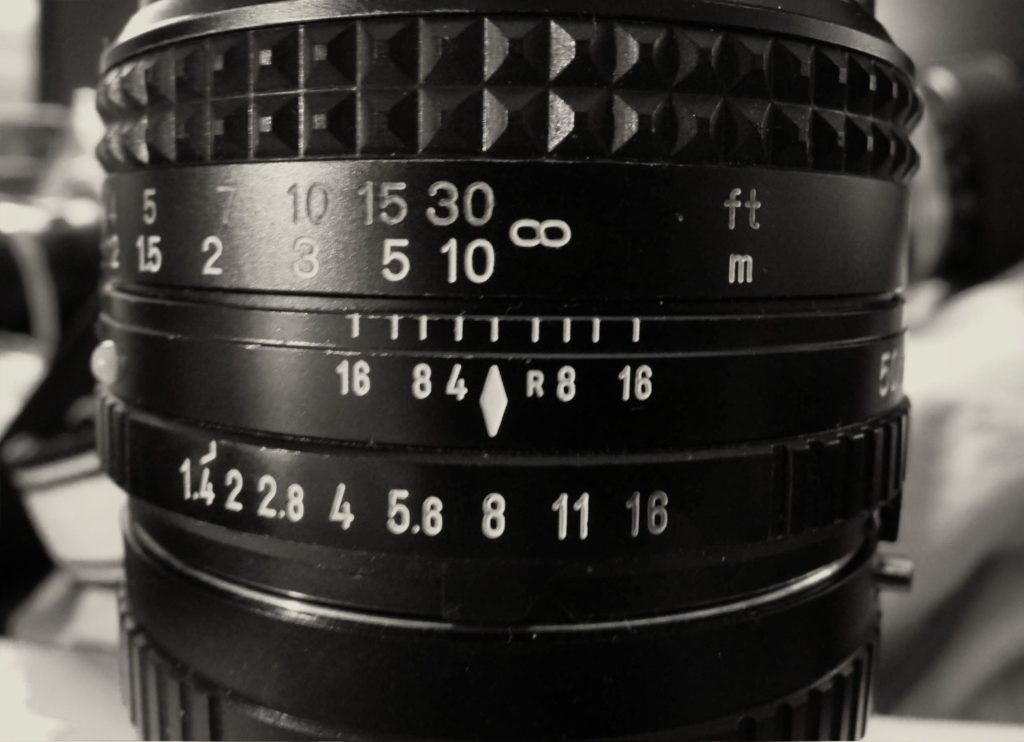
Konica Hexanon lens showing focus scale at the top, a depth of field scale in the center and the aperture selection scale at the bottom.
It may seem trivial, but the act of making an image often requires fast reactions with your controls. Not paying attention could easily ruin an otherwise great photographic opportunity.
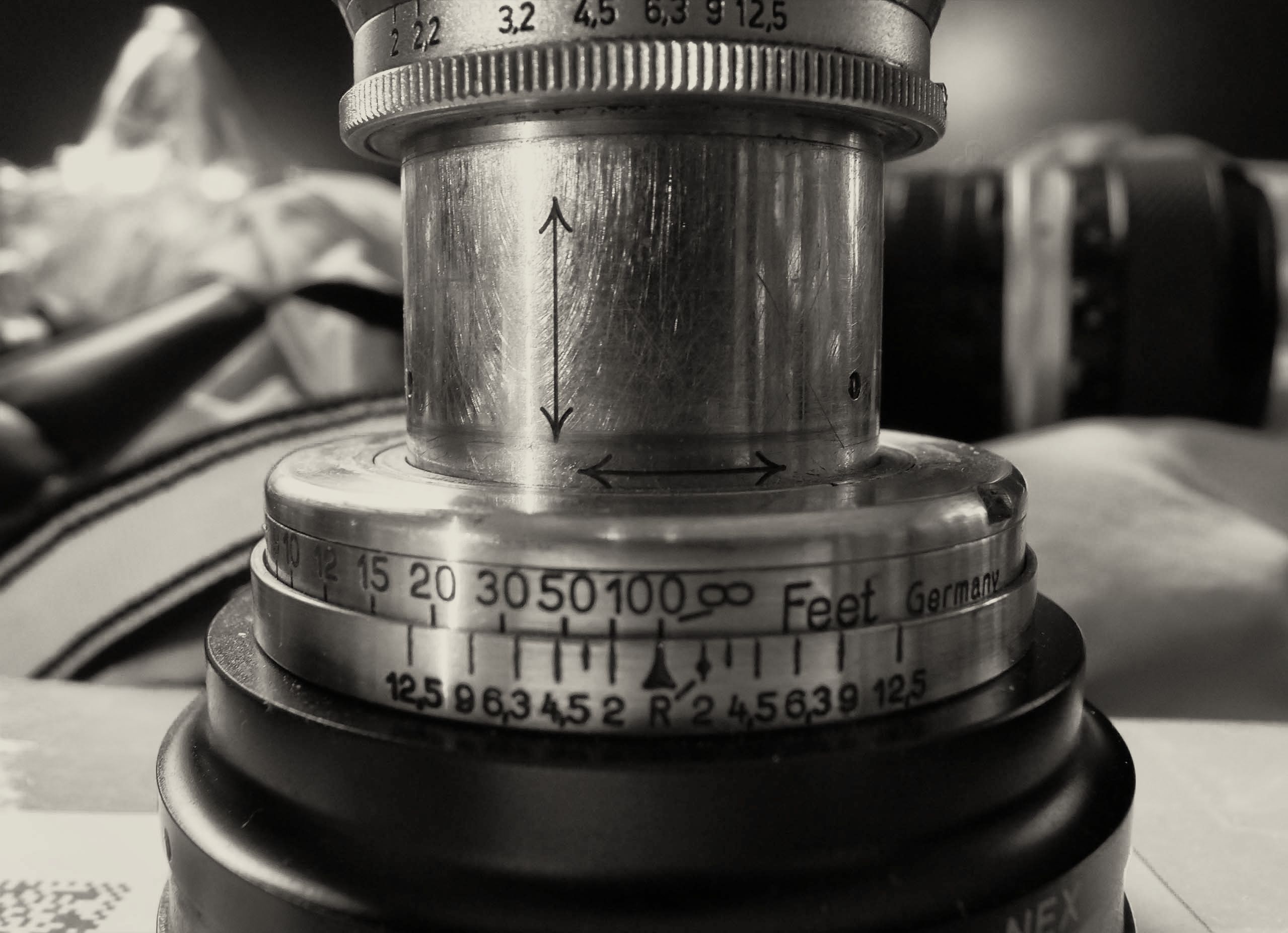
Here is a Collapsible Leitz Summar lens showing focus and depth of field scales. Aperture scale showing at the top of this picture.
Whatever lens used, the determination of focus and aperture movement is something to understand when creating photographs.
As a precaution, I tend to go out shooting with a single combination of camera and lens.
While shooting, I look for subjects that work with what I bring with me. Doing so allows me to train my eye on subject matter that fits the lens. For me, it is simply a more direct way to work.
Shooting with an old lens can be interesting for many good reasons. While there is a little extra thinking involved, it is something worth knowing. For some of us, the new ways are not always the best, the most rewarding, or the most fun. I like to use them primarily for the way they take me back in time to a more hands on way of shooting a picture. It makes me think a bit about all the things a lens can do and why it does what it does.
Hopefully, you might now understand how your camera sees focus and how to chose an aperture that will give you the kind of focus results you are looking for with any lens you decide to use.
My Book: http://lensgarden.com/book-focus/
The following notice covers all content on this blog.
NOTICE of Copyright: THIS POSTING AS WELL AS ALL PHOTOGRAPHS, GALLERY IMAGES, AND ILLUSTRATIONS ARE COPYRIGHT © JOHN NEEL (unless otherwise expressed) AND ARE NOT TO BE USED FOR ANY PURPOSE WITHOUT WRITTEN CONSENT FROM THE WRITER, THE PHOTOGRAPHER AND/OR lensgarden.com. THE IDEAS EXPRESSED ARE THE PROPERTY OF THE PHOTOGRAPHER AND THE AUTHOR.
This NOTICE of Copyright applies to all content posted on this blog – www.lensgarden.com.

